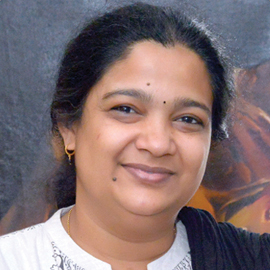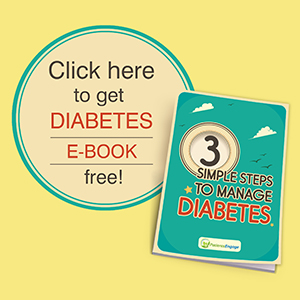
Losing vision later in life can feel overwhelming, but small, practical steps and use of technology aids can enable continued independence and an improved quality of life. Ms. Beula Christy, PhD, Head, Institute for Vision Rehabilitation L V Prasad Eye Institute shares suggestions based on their deep experience.
Sometimes due to an illness or an accident, vision impairment can happen in adulthood, or we grow older. Some conditions also cause vision loss. This can feel overwhelming, but small, practical steps and strategies can support continued independence and confidence to lead a full and meaningful life. Here are some suggestions to help in adapting to the changes:
- Restore independence - Mobility is the Key
Learn different mobility techniques suited to your level of vision. Independent mobility is the first step to exploring the world. Don’t hesitate to use a mobility cane if the situation demands it. Let go of the stigma—it's a tool of strength and confidence, not of shame. - Use and stay updated on Assistive Technology
Assistive technology can truly change the way you go about your day. Whether it’s using a magnifier to read, a smartphone to stay in touch, or accessible apps to navigate your surroundings, the right tools can make everyday tasks easier. Apps like screen readers, voice assistants, Be My Eyes, Space felt, or JAWS can support your independence and safety.
Technology is always evolving. Staying informed about new innovations can help you discover better ways to manage daily tasks. Stay curious, ask questions, and connect with a rehabilitation expert to explore what works best for you. - Stay connected
Staying in touch with others can make a big difference. Being part of a support group—online or in person—gives you a space to share, listen, and grow with others who understand your journey. Social connections and participating in inclusive activities support emotional well-being and help you feel less isolated. - Know your rights under the RPWD Act
The Rights of Persons with Disabilities (RPWD) Act is designed to support and empower you. It includes benefits like income tax exemptions, travel concessions, inclusive education, job reservations, and loan subsidies. Being aware of your rights can open doors to new opportunities and help you live a more empowered life. - Stay active – physically and emotionally
Try not to slip into a sedentary routine. Engage in meaningful activities—whether social, recreational, or creative. Build a daily routine that keeps you moving and involved. It’s okay to make mistakes along the way; each attempt builds confidence.
At the same time, caring for your emotional well-being is just as important. Spend time doing things that bring you joy—listening to music, tending to a garden, playing with a pet, or simply enjoying a walk. These small moments can help you stay balanced and strong from within. - Modify the physical environment
Even small changes in your surroundings can make a big impact. If you have some usable vision, improve lighting, use bold color contrasts, larger font sizes, and keep items arranged consistently. Add tactile markers, anti-skid flooring, and clear pathways to support safety and ease in movement at home and outside. - Organize personal belongings
Create a system for where things go. Keeping items in the same place makes them easier to find and reduces stress. Use bump dots, Velcro, or QR code tags (like Space felt) to label medicines, switches, containers, and daily-use items. These simple tools make everyday life more manageable. - Seek guidance and support
Vision loss doesn’t define you. With the right approach, meaningful connections, and timely support, life can still be full of purpose, joy, and discovery. Your journey may look different, but it’s still yours to shape. For support, contact: rehabhelpline@lvpei.org | 040-68102841 / 42
Five Essential Tools and Technologies for Individuals with Acquired Vision Loss
Adapting to vision loss later in life can be challenging, but a range of assistive tools and technologies are available to support independence, safety, and confidence. Here are five key categories of tools that can make everyday life more accessible:
- Screen Readers
Examples: JAWS, NVDA, Narrator (Windows), Voiceover (iOS/macOS)
Screen readers convert on-screen text into speech or braille, enabling individuals to independently access computers and digital devices for reading, writing emails, browsing the internet, and more. - Smartphone Accessibility Features and Assistive Apps
Examples: Talkback (Android), Voiceover (iOS), Be My Eyes, Lookout, Microsoft Seeing AI, Lazarillo GPS
Smartphones with built-in accessibility features such as screen readers, magnifiers, and voice commands, make them powerful tools for daily tasks like communication, reading, and navigation. Added specialized apps further enhance its usability. For example, Be My Eyes connects users with sighted volunteers via video calls for real-time assistance, while apps like Lookout, Seeing AI, and Lazarillo GPS use AI to read text, recognize objects, describe surroundings, and assist with wayfinding. - White Cane
A white cane is a vital mobility aid that supports safe, confident, and independent travel. It helps detect obstacles, steps, and changes in surface textures, allowing individuals to navigate both familiar and unfamiliar environments securely. - Low Vision Devices
Optical, non-optical, and electronic devices, such as handheld magnifiers, telescopes, and video magnifiers—can assist individuals with usable vision in tasks like reading, watching television, or identifying distant objects. - Labeling Tools
Tactile markers (e.g., bump dots) and tech-enabled labels like Space felt QR tags help users identify medicines, containers, and appliances. Scanning these tags provides audio descriptions, supporting safe and independent use.

Contributed by Ms. Beula Christy, PhD, Head, Institute for Vision Rehabilitation, L.V. Prasad Eye Institute
Changed
03/Jul/2025
Community






